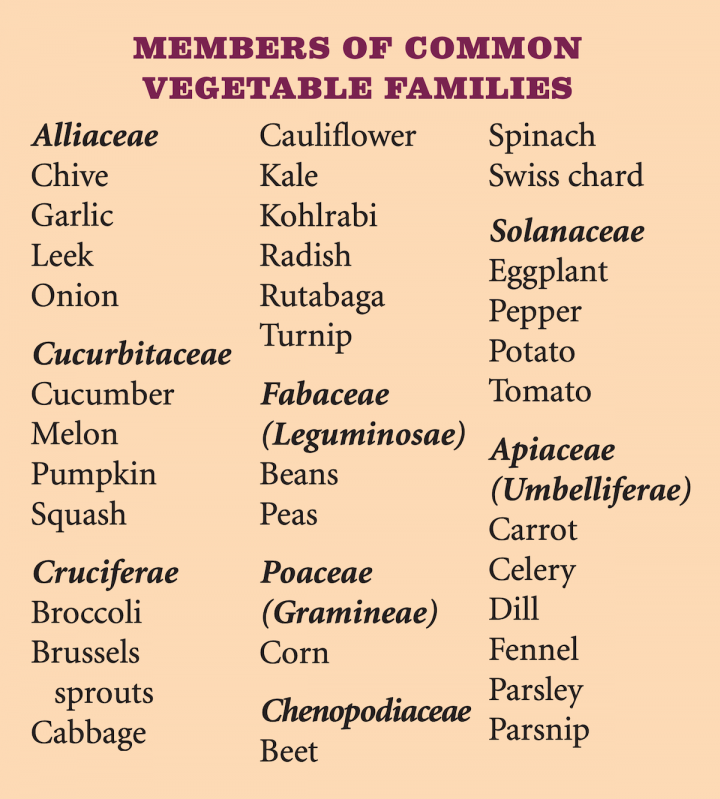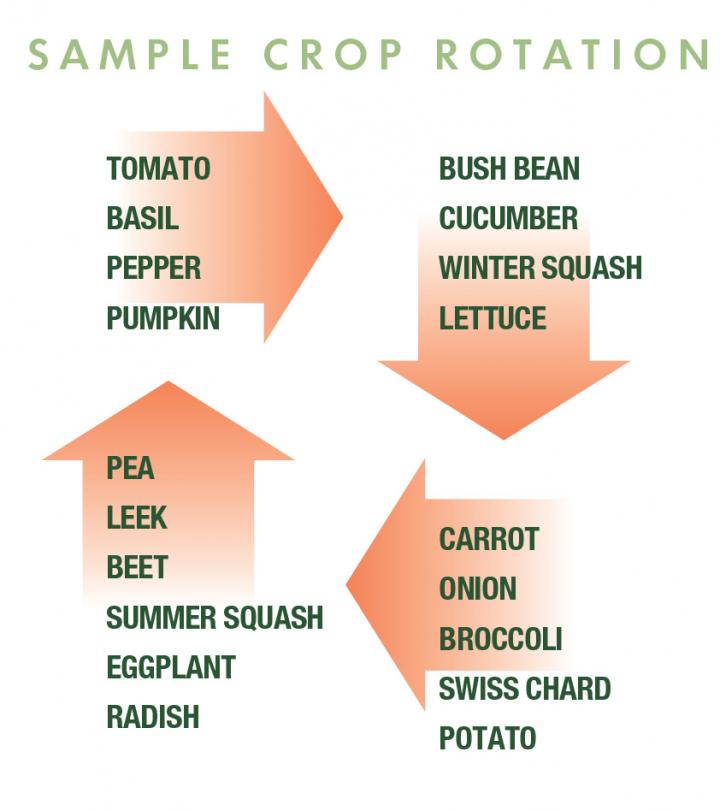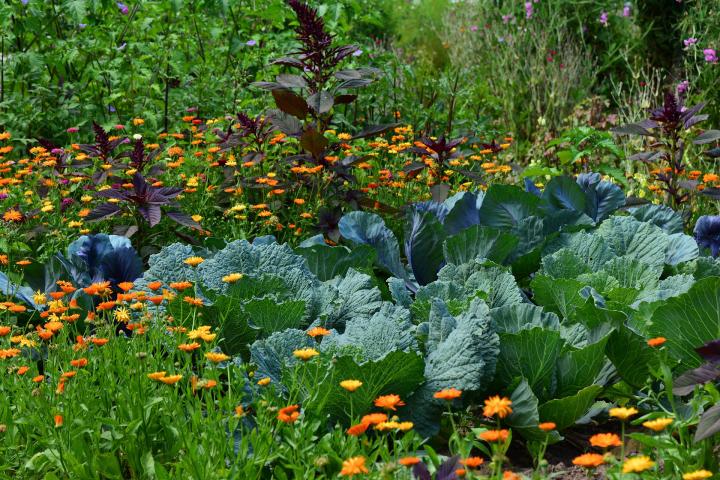Even if you grow a small vegetable garden, it’s smart to arrange your crops to avoid pests and problems. See an easy four-bed crop rotation chart for any small-space gardener.
The basic idea is that we do not (usually) want to grow only one crop in a bed.
- Large groups of the same crop make an easy target for pests.
- Soil nutrients are depleted when the ground is occupied by a large number of the same plant.
(There are exceptions. For example, mint spreads easily and it’s often best contained to one bed or container.)
We also do not want to use the same bed for the same crop next season; often the soil becomes so impoverished that artificial fertilizers are needed. And soil subjected to the same mechanical processes year after year will inevitably become compacted.
You may see a drop in plant health and productivity if crops are grown in the same spot for many years.
To avoid these pitfalls, adopt a crop rotation plan. The principle is straightforward enough—the same vegetables should not be planted in the same place year after year. As a system of organic gardening, crop rotation has many advantages:
- It lessens the need for pest control
- You reduce the spread of diseases lurking in the soil
- It avoids nutrient depletion in the soil since different vegetables extract different nutrients from the soil
Combined with other organic methods, rotation offers an excellent defense against all kinds of pests and diseases.
Still, the question of where to plant can be a puzzle.
Divide Your Garden Into Quarters
That’s why, for the average gardener, the easiest way to organize a crop rotation is to divide the garden into quarters.
Establish a central point and rotate your plants around it each year.
Assuming that you grow the same vegetables every season and that all members of a vegetable family fit into one quarter, this system is perfect. (One caveat: Try to arrange your plants within each quarter to avoid places where you had family members the year before.)

Every year, the plants grown in each given area are changed so that each group (with its own requirements, habits, pests, and diseases) can have the advantage of new ground.
Most crop rotation schemes tend to run for at least 3 or 4 years, as this is the number of years it takes for most soil-borne pests and diseases to decline to harmless levels. If your beds are divided into four groups, this means that members of each plant family won’t occupy the same spot more than once in a 4-year period. Perennial vegetables such as soft fruit, rhubarb, asparagus and globe artichoke aren’t replanted each year, so they may need their own dedicated bed.
Four-Bed Crop Rotation Chart
Here is a sample four-bed crop rotation chart:

However, most of us have more of some plant families than others or we have other reasons for wanting to plant things in specific places. If this is true for your garden, consider these strategies:
- Have a tall-crop garden rotation and a short one. Plant tall varieties of peas and beans on trellises and try growing cukes on fences.
- A way to avoid depleting the soil of important nutrients is the time-honored tradition of letting the land lie fallow. If you have the space (and energy!), develop a “spare” garden. Cover last year’s garden with a layer of compost and then mulch it heavily. For example, four sheets of newspaper covered with a layer of straw or leaves will keep most weeds from growing.
- To keep weeds from moving into last year’s garden, grow a cover crop such as buckwheat. Be sure to cut down the buckwheat or till it in before it forms seeds. Once you have established two garden spaces, the extra work is minimal, and it is easier to avoid having family members follow each other.
- If you’ve created a special area for a specific vegetable—for example, garlic—keep it there until you have a reason to relocate it. To help replenish minerals, add compost and bagged organic fertilizer every year.
- No one can convince me that rotating potatoes will eliminate the problem of the Colorado potato beetle. If you grow potatoes, these visitors will come, even if they have to walk from Denver. Predatory insects (e.g., ladybugs) are the gardener’s friend and better in the long run for helping to control many insect pests than changing a crop’s location. One avoidance tactic is to grow potato varieties that mature in fewer than 80 days.
- Keep plant appetites in mind: Corn is a heavy feeder and thrives where nitrogen-fixing peas or beans have grown. Light feeders include carrots, lettuce, onion, and squash family plants, and legumes such as peas and beans.

A combination of good soil and a healthy environment is the key to a good garden. If you nurture your soil and the microorganisms in it, your plants will be healthy and productive.
Adding lots of organic matter rather than applying chemical fertilizers will create a soil that’s able to nourish your tomatoes, even if they grow in last year’s pepper patch. Plants need 13 minerals from the soil, and a bag of 10-10-10 provides only three of them. Do your best, add lots of compost (we can not say this too often), and you will be rewarded.
See more tips on crop rotation including a video to see how to rotate your vegetable crops.

